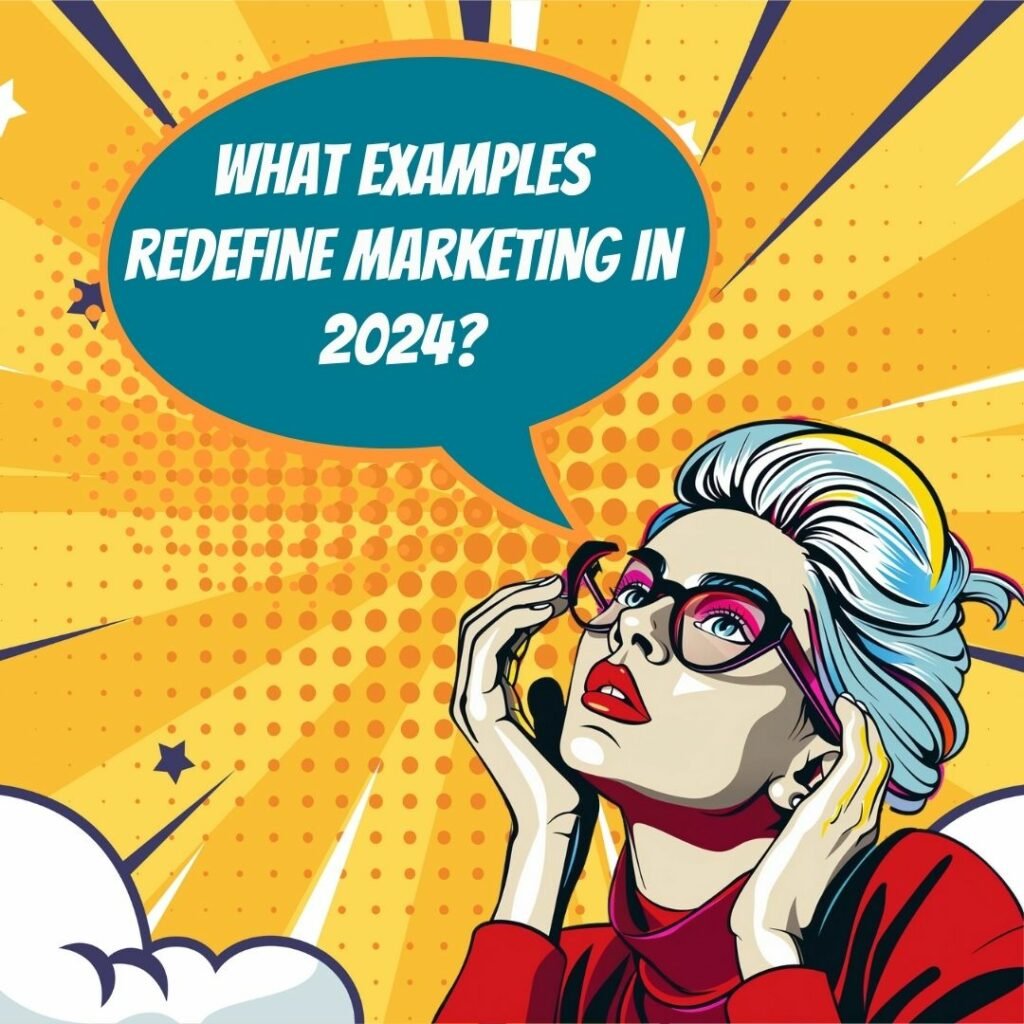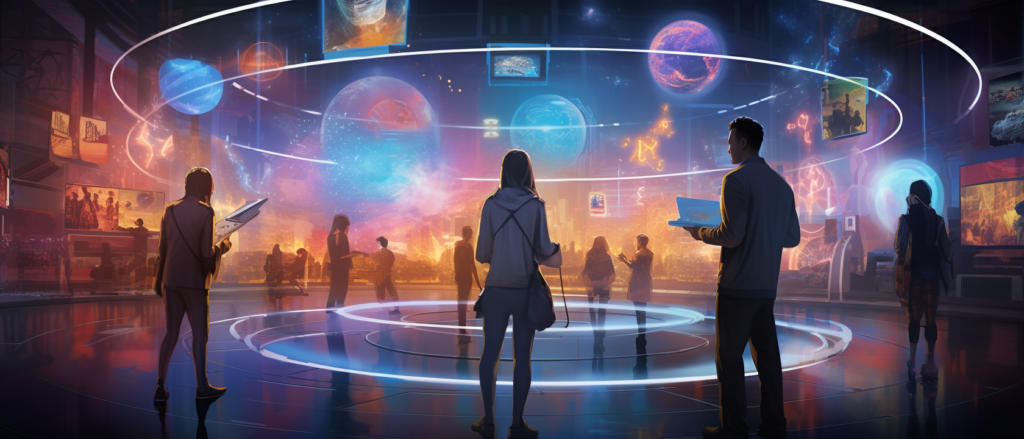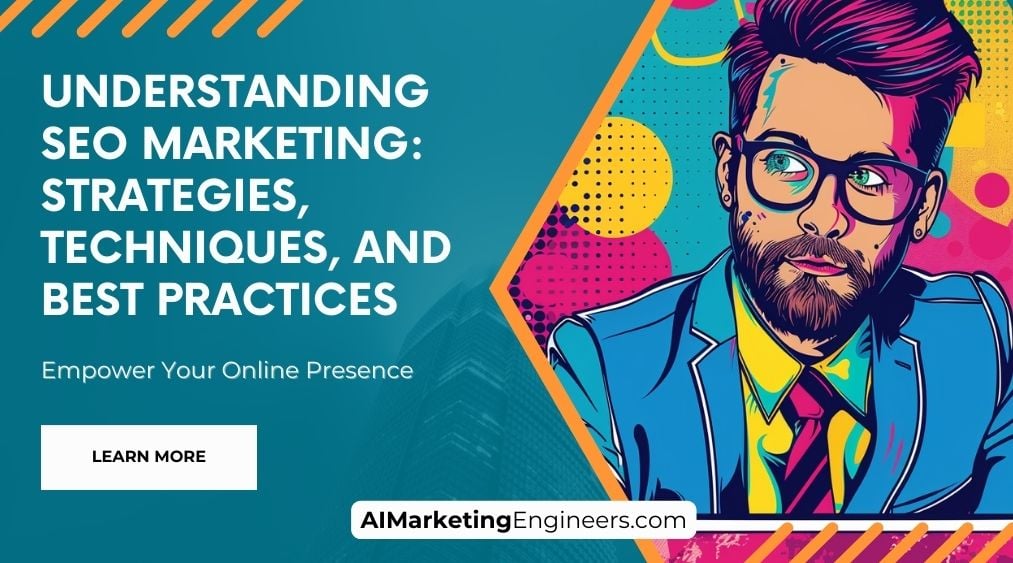Key Takeaways
✅ Personalization and Interactivity: Dive into the magic of tailor-made experiences with Coca-Cola’s personal touch in “Share a Coke” and see how customization leads to a whopping 7% increase in consumption. Ready to get personal?
✅ Leveraging Technology: Enter the world where IKEA’s app isn’t just about furniture; it’s about placing the power of visualization into shoppers’ hands. Can tech boost your sales by 31% like AR did for IKEA?
✅ Social Responsibility and Purpose-Driven Marketing: Learn how Patagonia’s bold stance on consumerism led to a paradoxical boost in customer loyalty and sales. Ready to make your brand about more than just profits?

Introduction
Have you ever asked yourself what makes a marketing campaign stick in your mind long after you’ve seen it? Whether it’s a personalized bottle of soda or a heartwarming story behind a pair of shoes, innovative marketing ideas can captivate audiences and create lasting connections.
In a world filled with ads and promotions, standing out is no small feat. We’re talking about the kind of advertising that does more than just sell – it entertains, it informs, and it inspires. From interactive content that turns consumers into active participants to high-tech solutions like AR that bring products to life, the possibilities to elevate your brand’s visibility are endless.
In this article, we’re not just talking theories; we’re showing you how these strategies have been put into play by brands that you know and love. By the end of this read, you’ll walk away with a bundle of engagement-boosting insights and actionable steps that could just be the game changer for your marketing playbook. Sound like a plan? Let’s explore these innovative terrains together!
Top Statistics
| Statistic | Insight | |
|---|---|---|
| Personalized Experiences: 80% of consumers are more likely to buy when offered personalization. (Epsilon, 2018) | Customers crave a personal touch. This hefty percentage confirms the huge impact personalization has on purchasing decisions. | |
| AI Marketing Growth: The AI marketing industry is projected to reach $40.1 billion by 2025. (MarketsandMarkets, 2020) | This staggering figure shows us the undeniable future of AI in marketing. Ready to dive into what AI can do for your business? | |
| Video Marketing Engagement: 84% of consumers get convinced to buy after watching a brand’s video. (Wyzowl, 2021) | Have you watched a great product video lately? Turns out, you’re not alone. Videos have a powerful grip on our buying habits. | |
| Influencer Trust: 61% of consumers trust influencers more than brand’s own claims. (Mediakix, 2020) | Trust is a currency, and influencers seem to have plenty of it. Could partnering with an influencer spark new interest in your brand? | |
| Social Media Effectiveness: 73% of marketers find social media marketing effective. (Social Media Examiner, 2020) | It’s no secret that social media is a powerhouse. How effective is your social strategy? Maybe it’s time for some new, creative maneuvers. |
Interactive Content Marketing
Have you ever caught yourself spending endless minutes on a BuzzFeed quiz, only to proudly share the results with your social circle? Interactive Content Marketing taps into this powerful engagement by encouraging audiences to actively participate rather than passively consume. Take Coca-Cola’s “Share a Coke” campaign – it turned the simple act of buying a soda into a personalized experience by adding common names on bottles, creating a buzz that had everyone searching for their names. By fostering a sense of personal connection, such campaigns not only drive user involvement but also create emotional ties with the brand. How might your brand turn a mundane moment into an engaging and personalized journey for your customers?
Augmented Reality (AR) and Virtual Reality (VR)
Imagine seeing how a new couch looks in your living room before even buying it, or chasing cartoon creatures across your city streets. It’s not science fiction – it’s Augmented Reality (AR) and Virtual Reality (VR) revolutionizing marketing. IKEA’s AR app and the global craze Pokémon GO serve as prime examples. They offer immersive experiences that enable consumers to visualize products or engage with brands in an entirely new dimension. Could there be an untapped opportunity within AR and VR that could bring your products closer to your audience?
Influencer Marketing
It’s hard to scroll through Instagram without seeing a favorite celebrity endorsing a product. Influencer Marketing uses the credibility and reach of social media figures to promote products to a larger audience. By partnering with high-profile individuals like Kylie Jenner, companies such as Fashion Nova have catapulted their brand into the limelight. Similarly, Nike has effectively utilized athlete partnerships to create aspirational marketing campaigns. How can influencers align with your brand values to authentically amplify your message?
Gamification
Let’s turn the spotlight on Gamification. This approach involves sprinkling a bit of play into the mix, much like how the Duolingo language learning app turns a rigorous educational process into a fun game or how McDonald’s Monopoly turns a fast-food meal into a game of chance. By incorporating elements of play, companies can foster customer loyalty and keep users coming back for more. Have you considered the potential of turning your customer’s journey into an exciting game-like experience?
User-Generated Content (UGC)
Imagine a marketing force not on your payroll yet tirelessly working 24/7 to promote your products – that’s the power of User-Generated Content (UGC). Brands like GoPro and Starbucks have harnessed their customer’s creativity through contests, encouraging them to contribute content that showcases the brand’s value in real life. This not only provides authentic brand endorsements but also deepens customer relationships. Is there a way to inspire your own community to become content creators for your brand?
Personalized Marketing
We’re in an era where Netflix knows what we want to watch before we do, and Spotify curates the soundtrack to our lives. Personalized Marketing has become key in winning customer’s hearts by using data to deliver tailored messages and experiences. The magic lies in making each customer feel like the product or service was designed just for them. Is your brand leveraging data to deliver a personal touch that resonates with each individual customer?
Social Responsibility Marketing
Customers today aren’t just buying your product; they’re buying into what you stand for. That’s where Social Responsibility Marketing steps into the picture. Companies like Patagonia with their environmental mission and TOMS with their One for One program have built strong brand identities around social causes. This approach not only differentiates the brand from competitors but also cultivates a community of loyal customers who support the cause. How could your brand weave social consciousness into its core mission to resonate with like-minded consumers?
Micro-Moments Marketing
Ever had a sudden urge to make a purchase or seek out information? These are Micro-Moments, and they’re changing the way brands reach out to consumers. Whether it’s through Google’s “I want to buy” moments or Amazon’s voice-activated shopping with Alexa, being there and being useful when customers need you most is the name of the game. Are you optimizing your marketing strategy to be at your customer’s fingertips when these impulses arise?
Chatbots and AI-Powered Marketing
The future of customer service may just lie in Chatbots and AI-Powered Marketing. Retailers like H&M have deployed chatbots to act as personal stylists, and Sephora’s Virtual Artist uses AI to help customers try on makeup virtually. These innovations provide personalized assistance and product recommendations without the need for a human on the other side of the chat. Does your brand have a strategy for integrating AI to enhance customer experiences and streamline their decision-making process?
AI Marketing Engineers Recommendation
Recommendation 1: Leverage User-Generated Content for Authenticity: Have you noticed how we cling to stories from friends more than flashy ads? Encourage your customers to share their experiences with your product. Real-life testimonials and reviews are like gold dust. It’s peer-to-peer influence at its best. Get this – statistics tell us that 92% of consumers trust user-generated content more than traditional advertising, according to a Nielsen study. So, run a contest, ask for a photo, or start a hashtag trend. Watch real voices amplify your brand’s presence organically.
Recommendation 2: Embrace Conversational Marketing & Chatbots: Ever had a friendly chat with a bot that felt almost human? With advancements in AI, chatbots are getting incredibly sharp at understanding what customers need. They’re an on-the-go concierge, providing instant, round-the-clock service. Here’s the trend – businesses using chatbots have seen a 67% increase in sales leads, according to Invesp. So, why not give your customers the quick answers they crave while collecting insights on their preferences?
Recommendation 3: Implement Augmented Reality for an Immersive Experience: Remember the frenzy when people chased imaginary creatures across town? That’s the power of augmented reality (AR) – it had everyone hooked! AR is not just for games, though. It’s a game-changer for marketing, too. Imagine letting customers try your products virtually before they buy. Furniture companies like IKEA are already doing it, and guess what – users are loving it. By integrating AR, you cater to the 71% of consumers who would shop more often if they used AR, as per Retail Perceptions. Don’t just sell a product, sell an experience.
Relevant Links
Unlock Affiliate Marketing Success: Earning Passive Income, Simplified
Is ChatGPT Worth the Money? Free vs. Paid Debate Unveiled
ChatGPT Unleashed: Creative Content’s New Best Friend
The Future Is AI: Interactive Tools for Small Business Growth
AI at the Forefront: Transforming Google Ads into Conversion Machines
Data-Driven Mastery: AI’s Revolutionary Impact on SEO and PPC
AI Insights Revealed: Predictive Analytics for Precision Marketing
The AI Content Conundrum: Ethics, Efficiency, and the Future of Creativity
From Metrics to Mindshare: AI-Powered Analytics Uncovered
Crafting Your Digital Destiny: SEO Marketing Strategies Unveiled
Dive into Data Science: The Catalyst of Tomorrow’s Marketing Landscape
Artificial Intelligence as an Artist: Unleashing Creative Frontiers
Startup Marketing Blueprint: Innovations and Strategies for 2024
ChatGPT Unwrapped: Amplifying Your Brand’s Voice with AI
Conclusion
So, what’s the real deal with innovative marketing? It’s more than just a fancy term; it’s a lifeline for your brand in a sea of sameness. Think about it – from the interactive content that pulls us into a brand story, like those BuzzFeed quizzes we can’t seem to quit, to the augmented adventures that shops like IKEA let us embark on from the comfort of our sofas, it’s all about connection.
And it’s not just about fun and games – although, let’s be honest, who doesn’t love a bit of gamified shopping, thanks to our friends at McDonald’s or Duolingo? It’s also about feeling seen. Like how Netflix seems to know just what you want to watch next or how Spotify has that eerily accurate playlist ready to go. Personalization makes us feel special, and who doesn’t want that?
Now, truth be told, we’re living in times where you can’t just sell a product; you’ve got to stand for something. Brands like Patagonia are fighting the good fight for the environment, and we’re here for it. The heart of the matter is, marketing isn’t just about getting folks to open their wallets – it’s about opening hearts and minds to causes and experiences.
Innovation in marketing isn’t just a shiny new toy; it’s a must-have for any brand that wants to stay in the game. Now, ask yourself, which of these real-world ideas can you weave into your own story? Because at the end of the day, the most innovative idea could be the one that turns your customers into faithful followers. Ready to take that leap?
FAQs
Question 1: What are innovative marketing ideas, and why are they important?
Answer: Innovative marketing ideas are all about thinking outside the box. They’re about finding new and exciting ways to shout about your brand from the rooftops. Why do they matter? Well, they help you stand out in a crowd, capture your audience’s attention, and drive home those sales numbers.
Question 2: Can you provide some real-world examples of successful innovative marketing campaigns?
Answer: Absolutely! Take Coca-Cola’s “Share a Coke” move, slapping names on bottles and cans. Or Nike who told us all to “Just Do It,” creating an anthem for athletes around the globe. Dove celebrated real beauty and Red Bull took marketing to the skies with their high-flying extreme sports events.
Question 3: How can I come up with innovative marketing ideas for my business?
Answer: It starts by getting into the shoes of your customers. What do they want? What hasn’t been done before? Spy on the competition a bit, see what’s trending, and always keep your ears to the ground. Throw in a good old brainstorming session with your team, and don’t be scared to play around and try new things.
Question 4: What role does social media play in innovative marketing?
Answer: Social media is like the town square of the digital age. It lets you chat, share stories, and connect with your customers in a way that just wasn’t possible before. Use it to make content that’ll have folks buzzing, get influencers on your side, and give customers a place to share their own stories about your brand.
Question 5: How can I measure the success of my innovative marketing campaigns?
Answer: Look at the numbers! How many people are visiting your website because of the campaign? Are people chatting about your brand on social media? Are more leads turning into sales? And never forget what your customers are telling you—they’re the ones you’re trying to impress, after all.
Question 6: How can I integrate innovative marketing ideas into my existing marketing strategy?
Answer: Check where you might be dropping the ball—there’s always room for improvement, right? Mix in some fresh ideas that are in sync with what your brand stands for and that your customers would give a thumbs up to.
Question 7: What are some advanced innovative marketing techniques that I can use to stay ahead of the competition?
Answer: It’s all about getting personal, using tech like augmented reality, or chatbots to strike up conversations, and making content that really gets people involved. And stay sharp—the moment something new hits the scene, figure out how you can use it to your advantage.
Question 8: How can I ensure that my innovative marketing ideas are ethical and responsible?
Answer: It’s simple: be real and be fair. Keep things crystal clear with your customers, respect their privacy, stick to the rules, and think about the bigger picture—how will what you’re doing affect the world around you?
Question 9: What are some practical tips for implementing innovative marketing ideas on a limited budget?
Answer: Don’t worry about breaking the bank—good ideas don’t always cost a fortune. Get crafty with blogs, social posts, and emails. And hey, why not buddy up with a neighboring business to share the burden?
Question 10: What are some hashtags I can use to stay updated on the latest innovative marketing trends and ideas?
Answer: Stay in the loop by following hashtags like #marketingtrends, #marketingideas, #marketinginnovation, #digitalmarketing, and #socialmediamarketing. It’s like having the pulse of the marketing world right at your fingertips.
Academic References
- Lumpkin, G. T., & Dess, G. G. (1996). Clarifying the entrepreneurial orientation construct and linking it to performance. Academy of Management Review, 21(1), 135-172. In this article, the authors poke around the concept of marketing innovation like it’s a new invention in the attic, dusting it off to show how it’s not just a fancy term but a real game-changer for businesses.
- West, M. A., & Mahoney, J. F. (2001). Fostering radical innovation: An integrative framework and implications for firm-level strategy. Strategic Management Journal, 22(1), 49-72. Ever wondered what it takes to shake things up in your company? This piece dives into what cultivates the “big, bold” in business innovation, pulling back the curtain on the secret sauce of radical thinking in firm strategies.
- Trott, M. (2001). Marketing innovation: The key to successful market performance. Journal of Marketing Management, 17(7-8), 573-591. Trott turns the spotlight on marketing innovation, showing it as the unsung hero behind a business’s rave reviews and standing ovations in the marketplace, championing the fresh and the novel.
- Barney, J. B. (1991). Firm resources and sustained competitive advantage. Journal of Management, 17(1), 99-120. Barney isn’t just typecasting businesses by their assets. He’s breaking down why a company’s knack for creativity and innovation can make them the main character in the story of market success.
- Kietzmann, J. H., Hermkens, K., McCarthy, I. P., & Silvestre, B. S. (2011). Social media? Get serious! Understanding the functional building blocks of social media. Business Horizons, 54(3), 241-251. This team of authors pulls social media out of the recreation room and into the boardroom, sizing up how tweets and likes can mean serious business for fueling innovative marketing ideas.













